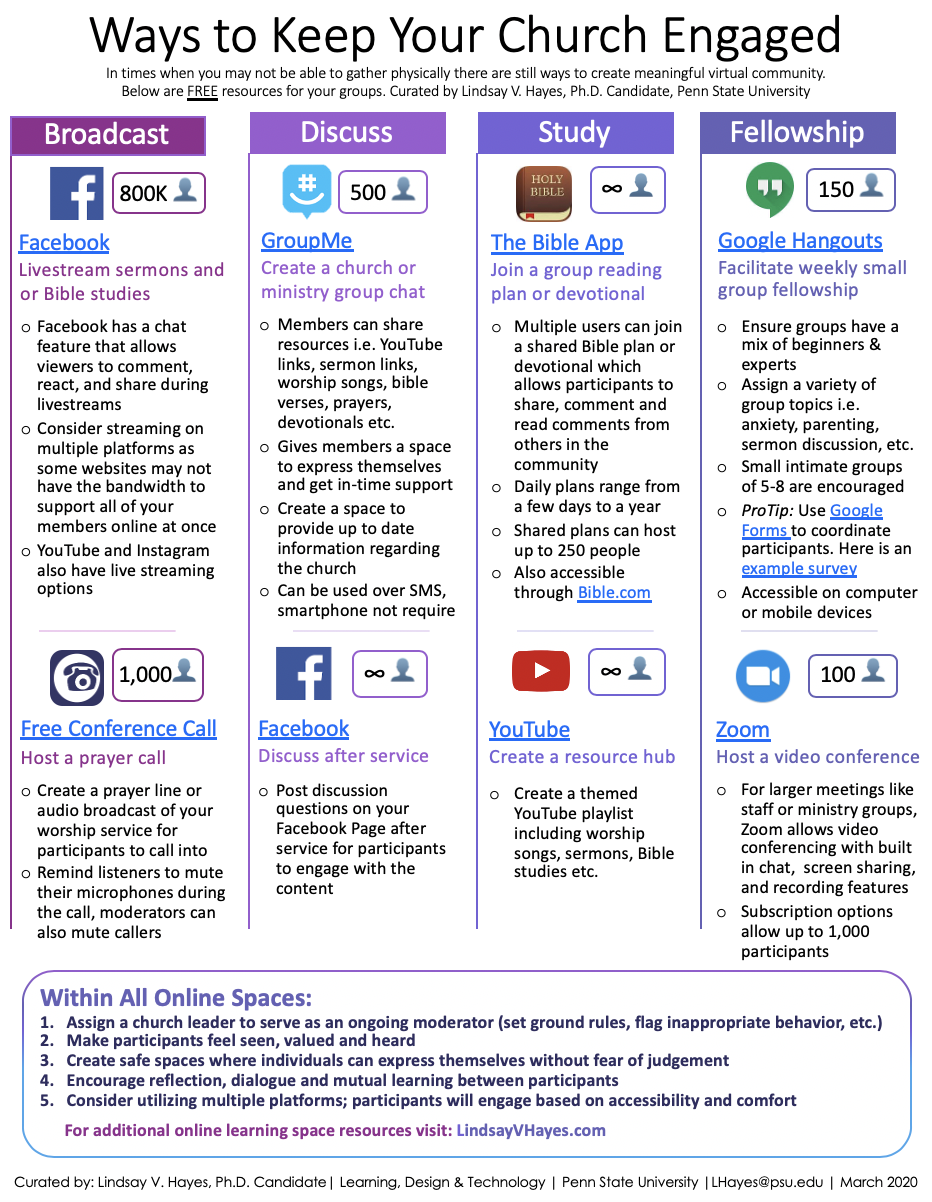I began researching online faith spaces in 2017 during my time as a Ph.D. student at Penn State University. Within the last two weeks, in response to COVID-19, the CDC is encouraging social-distancing while state governments have placed restrictions on physical gatherings. Faced with unprecedented times, church leaders around the world are turning to online spaces as a lifeline to their parishioners.
As a learning science researcher, I approach the church using a learning theory called Communities of Practice. (See: Approaching the Church from a Learning Science Perspective.) Christopher Hoadley, an NYU professor of Learning Sciences/Educational Technology outlines four ways technology can support Communities of Practice:
- Linking people with others who have similar practices
- Ex: A Facebook group connecting various ministry groups, age groups, etc.
- Providing a shared repository of information resources
- Ex: A church GroupMe chat where participants can share resources i.e. sermon links, devotionals, prayers, praise reports, testimonies, etc.
- Providing tools for discussing with others
- Ex: A Google Hangout for small groups to discuss the sermon and how they plan to apply it
- Providing awareness of the information context of various resources
- Ex: After a sermon or bible study, sharing a YouTube playlist of additional worship songs, sermons, bible studies, etc. centered around the same theme
Below, I have outlined a few ways technology can help churches stay connected. This list is by no means exhaustive, but does highlight free resources communities can adapt in order to meet the needs of their congregations.

In order to access the hyperlinks, download the PDF below:
For online giving platforms, check out these resources:
Five Online Giving Platforms
Four Inexpensive Online Giving Solutions
